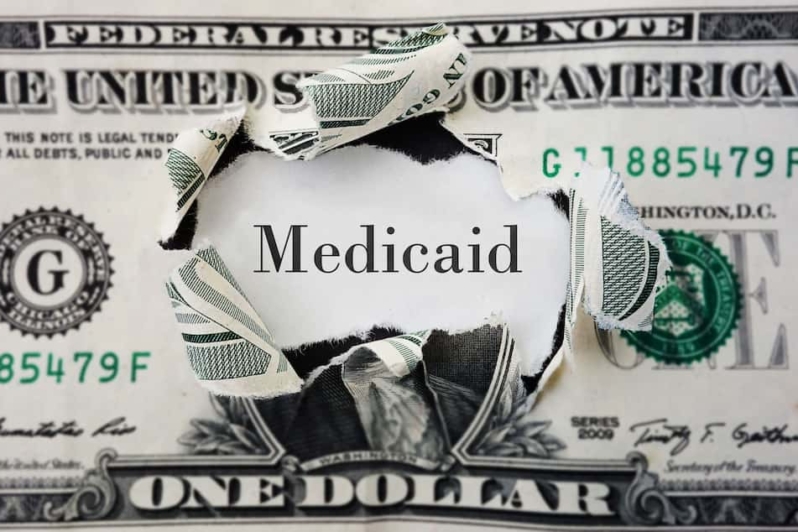Medicare Premiums to Increase Dramatically in 2022
Medicare premiums are rising sharply next year, cutting into the large Social Security cost-of-living increase. The basic monthly premium will jump 15.5 percent, or $21.60, from $148.50 to $170.10 a month.
Posted on November 19, 2021

The Centers for Medicare and Medicaid Services (CMS) announced the premium and other Medicare cost increases on November 12, 2021. The steep hike is attributed to increasing health care costs and uncertainty over Medicare’s outlay for an expensive new drug that was recently approved to treat Alzheimer’s disease. Because most recipients have their Medicare premium deducted from their Social Security check, the upswing in Medicare premiums means that the Social Security cost-of-living increase of 5.9 percent, which was the largest in 39 years, will be smaller for most people.
While the majority of beneficiaries will pay the added amount, a "hold harmless" rule prevents Medicare recipients' premiums from increasing more than Social Security benefits. This “hold harmless” provision does not apply to Medicare beneficiaries who are enrolled in Medicare but not yet receiving Social Security, new Medicare beneficiaries, seniors earning more than $91,000 a year, and "dual eligibles" who get both Medicare and Medicaid benefits.
Meanwhile, the Part B deductible will rise $30, from $203 to $233 in 2022, while the Part A deductible will go up by $72, to $1,556. For beneficiaries receiving skilled care in a nursing home, Medicare's coinsurance for days 21-100 will increase from $185.50 to $194.50. Medicare coverage ends after day 100. (For more information about Medicare's nursing home coverage, click here.)
Here are all the new Medicare payment figures:
- Part B premium: $170.10 (was $148.50)
- Part B deductible: $233 (was $203)
- Part A deductible: $1,556 (was $1,484)
- Co-payment for hospital stay days 61-90: $389/day (was $371)
- Co-payment for hospital stay days 91 and beyond: $778/day (was $742)
- Skilled nursing facility co-payment, days 21-100: $194.50/day (was $185.50)
So-called "Medigap" policies can cover some of these costs.

FREE WEBINAR
5 Things to Know About
Estate Planning
When You Turn Sixty-Five
Premiums for higher-income beneficiaries ($91,000 and above) are as follows:
- Individuals with annual incomes between $91,000 and $114,000 and married couples with annual incomes between $182,000 and $228,000 will pay a monthly premium of $238.10.
- Individuals with annual incomes between $114,000 and $142,000 and married couples with annual incomes between $228,000 and $2846,000 will pay a monthly premium of $340.20.
- Individuals with annual incomes between $142,000 and $170,000 and married couples with annual incomes between $284,000 and $340,000 will pay a monthly premium of $442.30.
- Individuals with annual incomes above $170,000 and less than $500,000 and married couples with annual incomes above $340,000 and less than $750,000 will pay a monthly premium of $544.30.
- Individuals with annual incomes above $500,000 and married couples with annual incomes above $750,000 will pay a monthly premium of $578.30.
Rates differ for beneficiaries who are married but file a separate tax return from their spouse. Those with incomes greater than $91,000 and less than $409,000 will pay a monthly premium of $544.30. Those with incomes greater than $409,000 will pay a monthly premium of $578.30.
The Social Security Administration uses the income reported two years ago to determine a Part B beneficiary's premium. This means that the income reported on a beneficiary's 2020 tax return is used to determine whether the beneficiary must pay a higher monthly Part B premium in 2022. Income is calculated by taking a beneficiary's adjusted gross income and adding back in some normally excluded income, such as tax-exempt interest, U.S. savings bond interest used to pay tuition, and certain income from foreign sources. This is called modified adjusted gross income (MAGI). If a beneficiary's MAGI decreased significantly in the past two years, she may request that information from more recent years be used to calculate the premium. You can also request to reverse a surcharge if your income changes.

FREE WEBINAR
5 Things to Know About
Estate Planning
When You Turn Sixty-Five
Those who enroll in Medicare Advantage plans may have different cost-sharing arrangements. CMS estimates that the Medicare Advantage average monthly premium will be lower in 2022, from an average of $21 in 2021 to $19 in 2022.
For Medicare’s press release announcing the new premium, co-payment and deductible amounts for 2022, click here.
More from our blog…
Understanding Medicaid: What Does Medicaid Cover?
In the complex and frequently changing landscape of health care in the United States, Medicaid stands out as a vital program. Since 1965, it has [...]
Elder Financial Abuse: How an Elder Law Attorney Can Help
Elder financial abuse is a significant issue affecting many older adults nationwide. It involves someone exploiting or misusing an older person’s finances or assets for [...]
Does Medicare Cover Prescription Weight Loss Drugs?
Americans have a growing appetite for prescription drugs such as Ozempic, Wegovy, and Mounjaro. Originally developed to treat Type 2 diabetes, they are now exploding [...]
How Social Security Overpayment Rules Are Changing
With a new commissioner at the helm, the Social Security Administration (SSA) has been announcing several policy changes in recent weeks. In late March 2024, the [...]
Recent blog posts

FREE WEBINAR
5 Things to Know About
Estate Planning
When You Turn Sixty-Five





